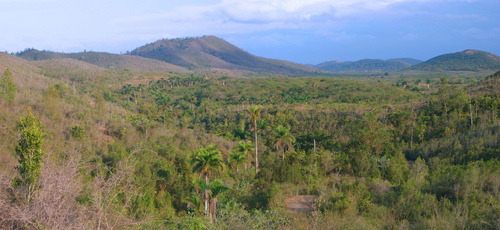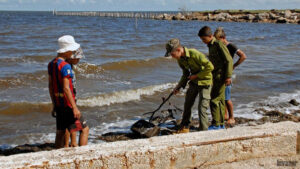Three new areas: a cuabal mountain range, a migratory bird refuge and a coral reef of more than 20,000 hectares in the province of Pinar del Río, in western Cuba, were declared protected.
These are the Sierra Preluda-Cuabales de Cajálbana, located in the municipality of La Palma; the Sancho Pardo Bank, in Sandino; and Punta Caribe, south of San Luis.
According to the sub-delegate of the Ministry of Science, Technology and Environment (Citma) in Pinar del Río, Damaris Gallardo, the Cajálbana cuabales, from one end of the Guaniguanico mountain range to the other, along 160 kilometres shared between Pinar del Río and Artemisa, are incomparable.
«This plant formation has an extraordinary scientific value, due to its high degree of endemism and the presence of endangered species, and although its unique «scrublands» constitute the most representative natural element, in the depression between Sierra Preluda and the southern slope of Cajálbana there is a pine forest on serpentine, with a stratum rich in endemic species that makes it a very diverse and complex ecosystem,» the expert explained to the Granma newspaper.
For its part, she said, the Sancho Pardo Bank is of enormous importance for the region, as it functions as a centre for the larvae of Antillean and Caribbean species to be sent to the Gulf of Mexico and the keys and continental coasts of North America.
In the area, 30 different types of stony corals (of the 60 described for the country), 50 types of sponges and 34 types of gorgonian corals have been identified, Gallardo said.
He pointed out that, so far, the remains of a dozen important shipwrecks have been identified there, including the Astrolabios wreck, sunk in 1607, from which objects have been recovered and exhibited in the Castillo de la Fuerza.
Referring to Punta Caribe, he specified that one part is in the sea and the other on land, and that the integration of various ecosystems has led to the development of a rich biodiversity. «Because of its geographical position, it is within the biological corridor for birds of the Mississippi. In addition, it has been confirmed that it is a feeding and refuge site for birds from Central America,» he said.
The area includes 2.5 kilometres of the Guamá river basin, with lush vegetation in which mangroves stand out and the mouth of the river is home to a wide diversity of fish, crustaceans and molluscs.




